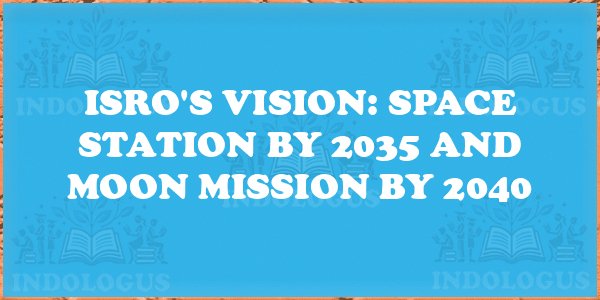India’s space exploration journey is set to reach new heights with ISRO’s groundbreaking plans for a space station by 2035 and a manned moon mission by 2040. Under the leadership of Chairman V. Narayanan, ISRO aims to establish India as a key player in space technology on the global stage.
Background: India’s Evolution in Space Technology
- ISRO’s humble beginnings with limited resources
- Evolution into a pioneering organization with achievements like PSLV and GSLV
- Landmark missions including Chandrayaan and Mangalyaan
Key Announcements by ISRO
- 2035: Space Station – ISRO plans to launch an independent space station for long-duration missions and scientific experiments.
- 2040: Moon Mission – India aims to send an astronaut to the Moon and safely return, showcasing advanced capabilities.
Technological Milestones and Achievements
- Aditya-L1 Mission – India joins a select group studying the Sun with satellite missions.
- 2025 Docking Experiment – Successful test for manned missions and orbital infrastructure development.
Future Missions and Global Role
- Venus Orbiter Mission – ISRO’s upcoming mission to explore Venus.
- Private Sector Participation – Increased involvement of start-ups and private players in the Indian space sector.
Key Takeaways for Competitive Exams
- ISRO’s ambitious plans for a space station and moon mission signify India’s growing prowess in space technology.
- India’s space program has evolved from modest beginnings to a globally recognized entity.
- Technological achievements like Aditya-L1 and docking experiments highlight India’s progress in space exploration.
- Increased participation from private players in the space sector aligns with India’s vision for technological advancement.



